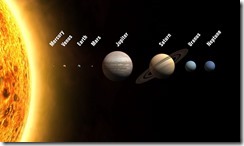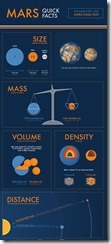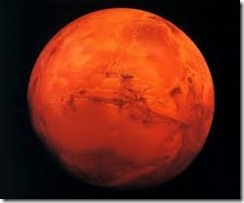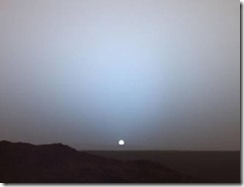To understand how the core of Mars has formed, we need to look at how the whole solar system did come to be, the inner, rocky planets like Earth and Mars and the outer, gas giants like Jupiter and Saturn. The picture below does show the whole history of the formation of our galaxy the Milky Way and our solar system.
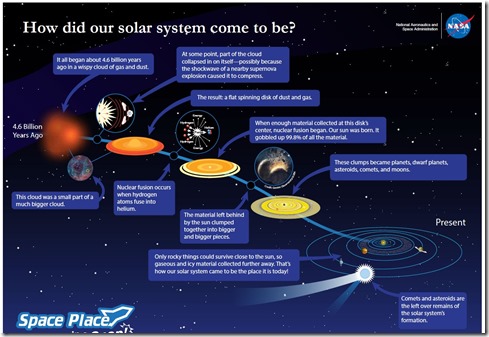
Here is a picture zoomed in at our solar system as it is now.
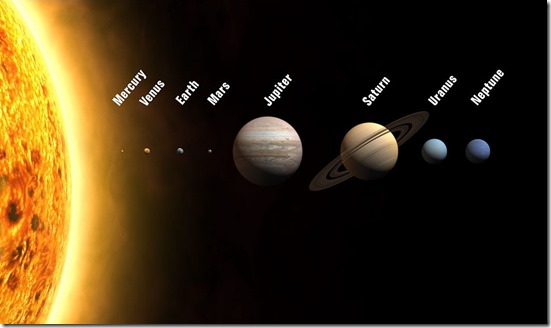
And here is the theory of how our planets have formed:
https://youtu.be/0zAAIYMDsTo


Our solar system, consists of:
The inner, the Rocky, or Terrestrial planets : Mercury, Venus, Earth and Mars.
The outer planets, the Gassy Giants: Jupiter, Saturn, Uranus and Neptune.
How the rocky planets formed:
1. The material that formed our solar system originates probably from a supernova explosion somewhere in our Milky Way. It formed a cloud that collapsed due to gravity and started to spin and as it spun it slowly flattened out to form a disk. Astronomers call such a disk a protoplanetary disk or short a proplyd, and as it collapsed it got hotter and hotter until fusion occurred and our sun was born. About 99.9% of all the material in the proplyd went into the sun, the 0.1% of the proplyd’s leftovers formed the rest of the solar system, the planets and planetoids.
2. The intense heat of the young sun drove away gassy materials (a lot of hydrogen and helium) from the inner parts of the solar system. Making this region deprived of hydrogen and helium and formed the outer planets, the gassy planets Jupiter, Saturn, Uranus and Neptune. These gas giants contain 99% of the leftover material, so what we're left with is a tiny residue of a tiny residue to form the inner rocky planets, including our Earth.
3. Closer to the sun, from that tiny residue of a residue, you find material orbiting, orbiting in the inner orbits, and that material is less gassy. There's more sort of solid stuff. You have little dust motes that eventually will gather together through electrostatic forces or collisions to form little rocks. You have particles of ice that will eventually form snowball-like objects, and eventually they form things like meteorites or asteroids, and they're getting bigger and bigger and bigger and they're colliding with each other. And in each orbit, you eventually get large objects that finally sweep up through their gravitational pull, everything else that's in the orbit. And so, eventually, over a hundred million years, in each orbit you have a rocky planet. Now, this process is called accretion.
-------------------------------------------------------------------------------------------------------
Since the four rocky planets were created with the same process there structure is very similar and varies only due to their different sizes , their distance from the sun and the time lapsed since their creation.

Very little is known about the core of Mars, but we can project the probability of the structure of its core from the knowledge we have gained about the Earth’s core.
https://youtu.be/ZzcXGqrvxJc

The early earth was extremely hot for a number of reasons :
1. Radioactivity: The supernova that blew up just before the solar system was formed created a huge amount of radioactive material, the radioactivity generated a lot of the heat.
2. Accretion: The violent collisions of materials like meteorites and asteroids in the early Earth created huge amounts of heat.
3. Pressure: As the clouds of dust from the supernova became denser and denser due to gravity, an enormous amount of heat was generated particularly at the centre where the highest pressure occurred.
In fact, the early Earth did get so hot that it melted, and that is really important. Because if it hadn't melted, today's Earth would be very different from the way it is. To get a sense of what happened and why this was so important, let's imagine a kind of absurd cooking experiment.
Put some stuff in a sauce pan. You're going to put in some coins. You're going to put in some rice. You're going to put in some plastic. Let's add a bit of mud.
Let's put in some ice and you can chuck in one or two other things. And now, we're going to heat that stuff up to several thousand degrees. Don't stir, just let it simmer.
Finally, what we'll see is that the whole thing is going to melt. The heavy stuff, such as the coins, are going to sink down to the bottom, lighter stuff is going to rise to the top, and some stuff is going to evaporate and boil above the sauce pan.
Now something very like this seems to have happened to the early Earth. It melted and because it melted, it formed a series of layers and they give it the structure we have today. Let's look at the four main layers.

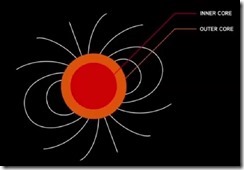
1. The Inner and the Outer Core : The first is at the centre and is mainly iron and nickel because they are heavier than most other materials and therefore sank to the centre of the Earth. And the fact that the centre of the Earth is full of magnetic metals (iron and nickel) is really important because this gave the Earth its magnetic field, and the magnetic field deflects some of the sun's rays that would be harmful to living creatures such as us. So that's the first layer, the core.
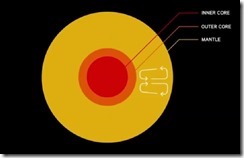
2. The Mantle : The lighter stuff-- lighter rocks-- float above the core and form a layer that's called a mantle. Now, the mantle you can think of as a sort of hot sludge of rocks. These rocks are so hot they're sort of semi-molten and they're actually moving around in convection currents inside the mantle.
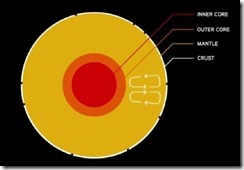
3. The Crust : At the very top, we have a layer called the crust. Very light rocks such as basalts and granites stayed on the top, they cooled down and formed a thin solid layer, the crust. That's where we live. The crust is pushed around by the convection currents from underneath. You can think of the crust as a tiny, thin layer a bit like a sort of egg shell.
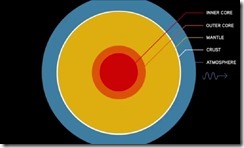
4. The Atmosphere : Finally, the fourth layer, the atmosphere. Some of the gassy stuff bubbles up to the top, it evaporates. The very light gases such as hydrogen disperse into space, but a lot of other gases like Nitrogen and Oxygen, just hang around the Earth held by its gravitational pull.
And that's how the Earth acquired the structure it has today. All of this happened about ten million years after the creation of our solar system.
---------------------------------------------------------------------------------------------
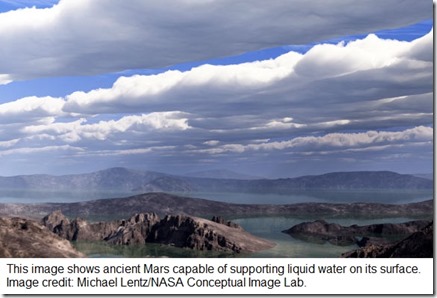
https://youtu.be/XNkArWUT8pA
A new animation by NASA scientists illustrates what Mars – the fourth planet from the Sun and the second smallest planet in the Solar System – may have looked like billions of years ago.
Billions of years ago when the Red Planet was young, it appears to have had a thick atmosphere that was warm enough to support oceans of liquid water - a critical ingredient for life. The animation shows how the surface of Mars might have appeared during this ancient clement period, beginning with a flyover of a Martian lake. The artist's concept is based on evidence that Mars was once very different. Rapidly moving clouds suggest the passage of time, and the shift from a warm and wet to a cold and dry climate is shown as the animation progresses. The lakes dry up, while the atmosphere gradually transitions from earth-like, blue skies to the dusty pink and tan hues seen on Mars today.
Today, Mars is a cold, desert world. Liquid water cannot exist pervasively on its surface due to the low atmospheric pressure and surface temperature, although there is evidence for spurts of liquid flow that perhaps consist of a briny solution with reduced freezing temperature. Water under current conditions can be ice or sublimate directly into vapour without staying in a liquid phase.
Now a day, scientists are not yet certain if the core of Mars is solid, liquid, or in two distinct sublayers, like Earth. Future measurements will tell us more.
http://mars.nasa.gov/allaboutmars/facts/








